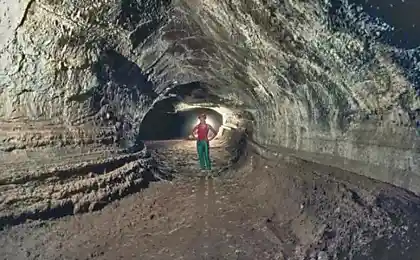224
Traces of Homo Sapiens from a Romanian cave are the oldest in Europe

The footprints of six or seven modern humans have received a new radiocarbon date – about 36.5 thousand years ago.
Footprints of Homo Sapiens, found in the cave Chur-Izbuc (Ciur-Izbuc, Romania), were the oldest footprints in Europe. This is stated in an article published in the American Journal of Physical Anthropology.
About 400 footprints were discovered in 1965. Initially, they were attributed as footprints of a man, woman and child who lived about 10-15 thousand years ago. Now researchers from the University of Kuztown in Pennsylvania (Kutztown University in Pennsylvania) have obtained a new radiocarbon date for the tracks - about 36.5 thousand years ago. The date was determined from a sample of bear bones found just under the imprints of human feet.
To date, only 51 of the 400 tracks have survived, the rest destroyed by tourists and speleologists. A new study of fingerprints found that seven or six individuals, including at least one child, left them behind.
Among the previously published footprints of Homo sapiens found in Europe, there are no traces older than 33 thousand years. This makes the find from a Romanian cave the oldest known in the region. It may also be one of the oldest in the world. At a conference in 2011, researchers reported traces of modern humans from Tanzania, which they say are about 120,000 years old. However, these prints have not yet been published.
In the UK, traces of more than 780,000 years have also been found. However, they belong to another species, probably Homo antecessor.
The earliest footprints of human ancestors and relatives date from about 1.5 million years ago. They come from Africa. Two such finds were made east of Lake Turkana, Kenya. There, traces were left by representatives of the species Homo erectus or zinjanthropes (Paranthropus boisei).
There are earlier footprints dating from about 3.66 million years ago and found in Laetoli, Tanzania. They were left with australopithecine. These human ancestors were erect, but they cannot be considered human: Australopithecines occupied an intermediate position between bipedal apes and early Homo.
BMW developing wireless inductive charging system for electric vehicles
Green electricity is unprofitable Finns























